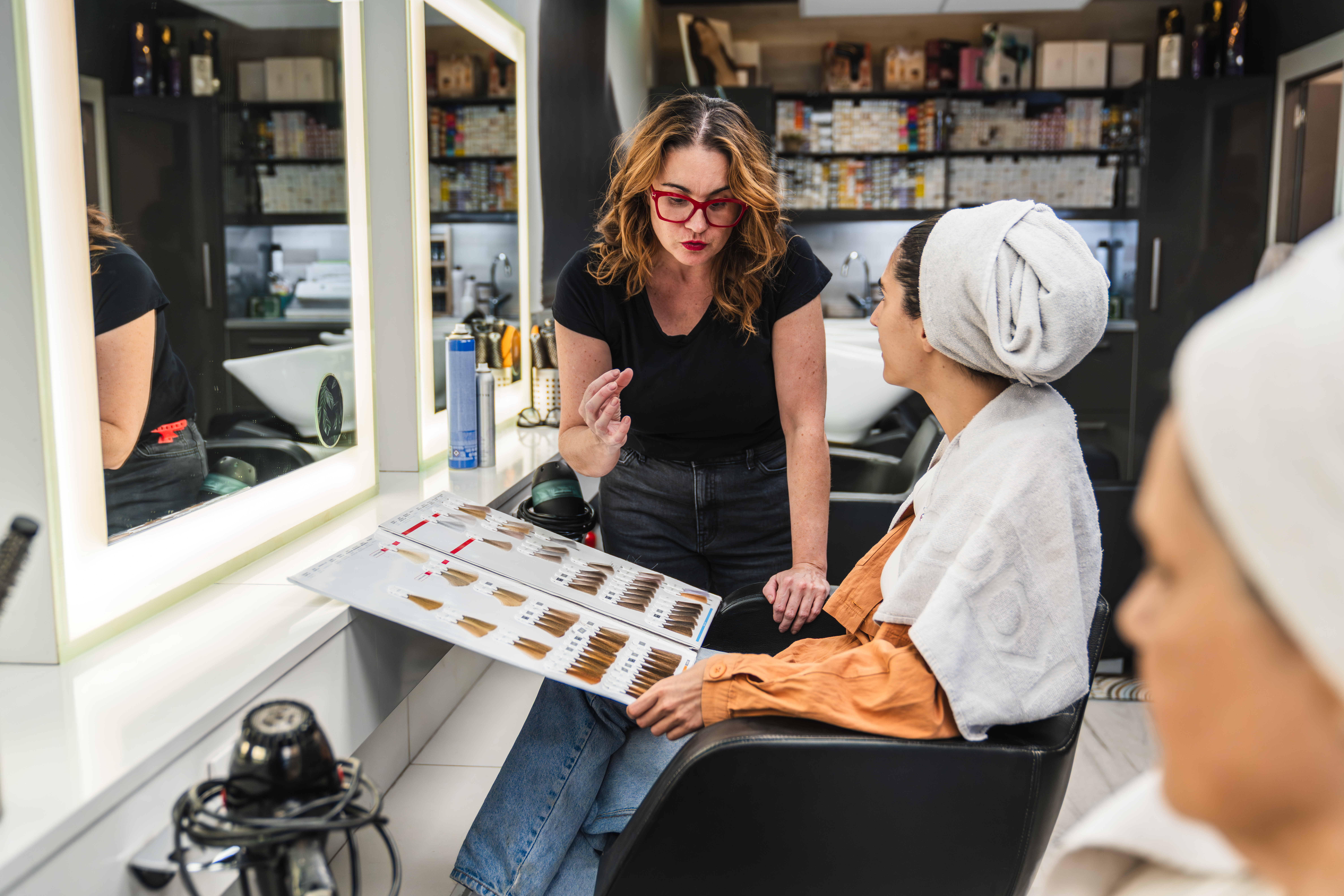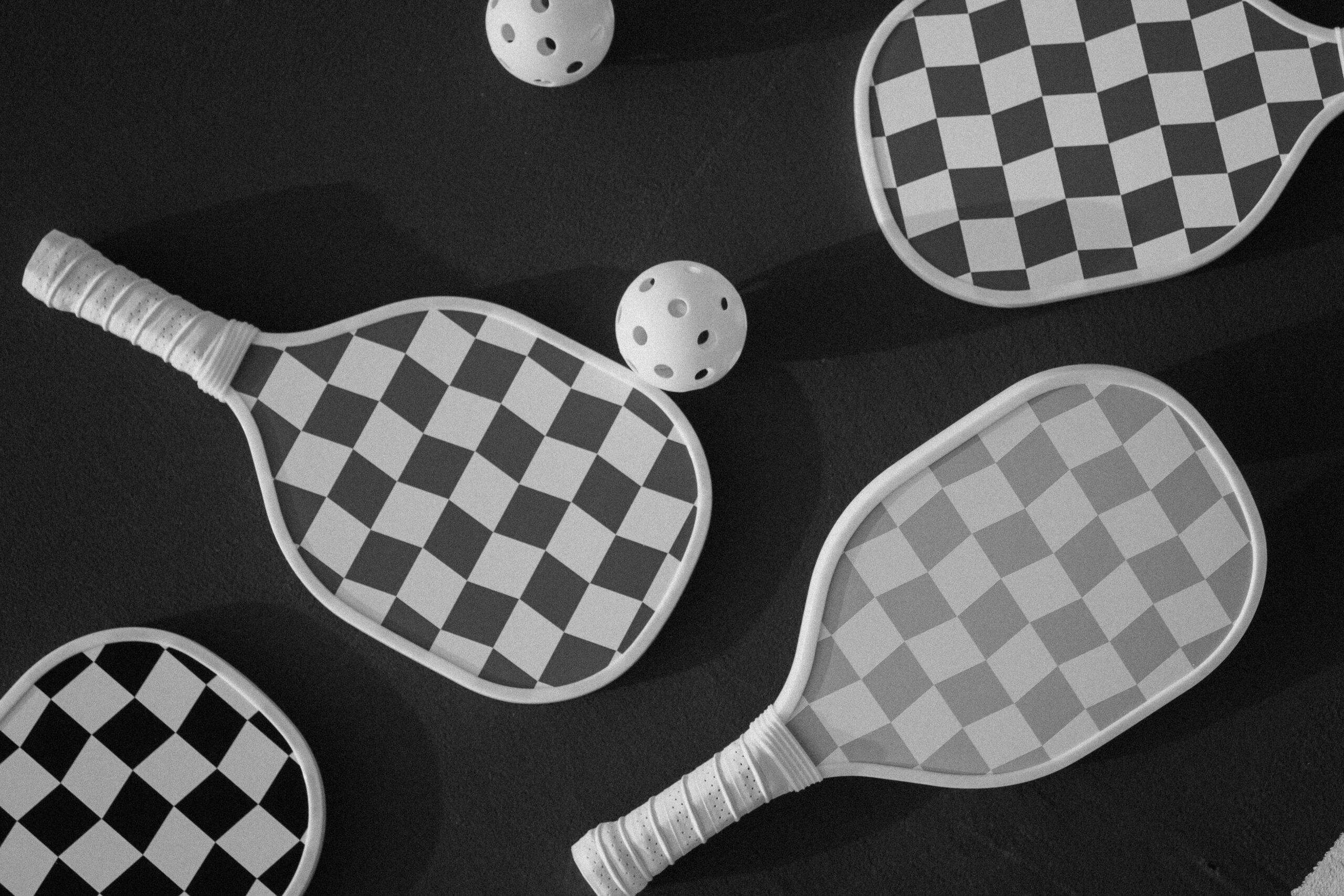Blog posts about living in, understanding, and finding the best of mavenhood.
The Blog

Hair changes gradually over time, with subtle textural shifts and less natural shine. When familiar styles start to fall in new ways, making minor adjustments can help those changes look both intentional and modern. The aim is to keep your hair feeling current and true to you.
Disclosure: This post contains affiliate links. If you buy something through these links, we receive small commissions that support this site. As an Amazon Associate, we earn from qualifying purchases.
Hair Evolves with Time
Hormones, health, and color all play a part in how hair behaves. It can feel finer or heavier, softer or more textured, sometimes even in the same month. Paying attention to those shifts helps you stay ahead of what your hair needs.
When it feels dry, weekly conditioning masks or a few drops of lightweight oil can restore smoothness. If it starts to lose lift, use light styling products that add volume without stiffness. Brands including Nutrafol have strong followings for their supplements and serums that address hair issues. These products can be worth exploring if you’ve noticed more shedding or slower regrowth.
Your hair’s rhythm changes over time, and making small care adjustments can make a big difference.
The Chin-to-Ear Test
Before changing your length, try the simple pencil-and-ruler test that stylists often use to check proportion.
- Hold a pencil horizontally under your chin.
- Place a ruler vertically from your earlobe to the pencil.
- Measure where they meet.
If the distance is less than 2.25 inches, shorter cuts such as bobs or pixies often sit well with your proportions. If it is more than 2.25 inches, longer shapes usually feel more balanced.
These measurements provide a quick and easy guide to how different lengths might suit your face. Comfort and personal preference always come first in your choice of hair length. The best haircut is the one that feels natural and easy when you look in the mirror.
Focus on Proportion
When a haircut starts to feel off, it usually means the shape has lost balance. Hair grows and settles in ways that change how it frames the face. The length that once felt light or flattering can start to feel heavy or uneven.
Different hair lengths draw the eye to specific areas. Hair that ends near the chin highlights the jawline, while longer hair softens and elongates the face. Layers that start near the cheekbone or collarbone bring movement and light upward.
Proportion shapes how a cut looks more than any face-shape chart ever could. When the shape feels balanced, it complements your features and moves naturally without extra effort.

Let Texture Lead
Texture always shapes how a cut looks. When new waves or curls appear, let them guide the design. A dry cut allows your stylist to see how your hair falls and how its texture moves once it’s settled. Finer hair benefits from fewer layers and stronger ends, while thicker or coarse hair often needs lightness inside the shape so it moves easily.
Texture also affects length. Curls shorten as they dry, straight strands show every line, and fine hair stretches under its own weight. The right balance keeps your style consistent, whether styled or air-dried.
Match Style to Routine
A good haircut fits the way you live. How often you wash your hair, how it reacts to humidity, and how much time you want to spend on it all matter.
One woman found her rhythm by washing every fourth day. She wore her hair down on the first day, shifted the part on the second, and tied it back on the third. She planned her wash days around events and used dry shampoo or a baseball cap on weekends when she wanted more time. That kind of awareness helps hair look its best from one wash to the next.
Your haircut should make you feel confident and at ease. If you air-dry most days, choose a shape that settles naturally. If you prefer a blowout look, plan for a cut that holds its shape after styling and can be restyled in the days that follow.
When you meet your stylist, bring reference photos that show the cut you want, not just the length. Point out what stands out to you, like how the layers frame the face or how the ends fall cleanly. The more you describe what draws you in, the easier it is for your stylist to match the feeling you want to create.
Keep Color and Shine in Sync
Color affects how a haircut looks and how it reflects light. As pigment softens or fades, the shape can lose dimension. A few lighter pieces near the face or a clear gloss can add brightness without changing your base color.
If you are blending or embracing gray, tone makes a difference. Brightness looks best when the shade stays clear rather than muted. Purple shampoo, including a favorite So Silver, help neutralize yellow tones in gray, silver, or blonde hair. Blue shampoo works better for brunettes because it balances the warm tones that can make brown hair look brassy. Incorporating a toning shampoo into your weekly routine can help maintain clarity between salon visits.
Healthy texture supports any color choice. Regular trims, mindful heat use, and good scalp care keep hair shiny and strong. Moisture and balance matter as much as tone, and consistent care often enhances color more than frequent touch-ups. Hair that is well-maintained always looks current because it moves easily and reflects light naturally.
Working with Your Stylist
A good relationship with your stylist makes it easier to adapt to changes in your hair. If your usual cut or color starts feeling off, bring it up at the beginning of your appointment so there’s time to discuss options. Most stylists appreciate feedback when it’s clear and focused on what you’d like to adjust.
You might say something like, “I liked how it felt lighter a few cuts ago,” or “I’m thinking about changing how it falls around my face.” This kind of language keeps the focus on what you want, not what went wrong, and helps the stylist tailor their approach.
Ask how the cut will grow out and what kind of upkeep will keep it looking its best. Clear communication at the beginning of each visit sets the tone for results that feel right when you walk out the door.
The Point of Balance
Hair continues to evolve, and so do the ways to work with it. Wigs, toppers, and clip-in pieces now offer a simple way to add volume, coverage, or variety without a long-term commitment.
Many women use them for travel, events, or to make styling easier. The hair addition industry has expanded, offering pieces that are lightweight, natural looking, and easy to use.
Whatever you choose, whether it’s your natural hair, added pieces, or a combination, the best approach is the one that makes you feel confident and comfortable with your look. The right haircut, color, or addition should support how you live and how you want to present yourself.
May all your hair trials be beautiful.

Asking a woman you’ve just met if they have kids seems ordinary enough. Society expects a shared life plan, and the majority will say yes. They’ll go on to tell you the number of children they have, their ages, and possibly where they live, the schools they attend, or their professions. If one of their children is a doctor, this last bit of information is almost guaranteed.
There’s another, smaller group, where the air shifts the moment the “Do you have kids?” question appears. It raises a subject that, for them, is private, personal, and often uncomfortable. While they may have struggled to make peace with limited options, faced limits outside their control, or spent a large sum on infertility treatments, explaining any of that isn’t required. The question delves into territory that is off-limits, yet there it is, a subject of conversation.
One experience watching an incredibly talented, successful, stylish woman brush off the invasive questions around her childless status was a masterclass in itself. She gave the offender the opportunity to back track with “Why do you ask?”, and when they persisted, shot back “Oh, I’m just too wild”, with a mischievous grin that dared them to continue the inquiry at their own risk.
The speaker didn’t owe that person, or the other people listening intently, an explanation, and she didn’t offer one. Her steadiness showed self-respect in real time, and her confidence filled the space where the lingering question hung in the air. I was in awe of her confidence and poise in the face of a situation that would have made most people crumble. Since the question stopped mattering the moment she chose her tone, I filed it away as inspiration to answer all types of ridiculous, invasive questions.
It’s common for women without children to face questions from people who primarily measure worth by family ties. Many hear the same line of questions about their motherhood status from colleagues, relatives, or strangers who believe they are being kind, expressing interest, or concern. The repetition can wear down even the strongest voice, and each time it happens, a woman must decide whether to stay silent, redirect, or respond directly.

Over time, I’ve learned that there are several ways to respond without interrupting the flow of conversation or bringing it to a grinding halt. My preference, which follows the example observed years earlier, is to handle it with humor and grace, e.g.
“I don’t, unless you count my houseplants.”
“I don’t, but I’ve raised a few deadlines.”
“I don’t, and my sleep schedule thanks me.”
“I don’t, and that suits me.”
Similar to her, “I’m just too wild”, each of these answers resets the tone and brings the focus back to the life being lived. Confidence doesn’t need to defend itself, and it can be light, honest, and steady all at once. When women respond with this kind of ease, they reshape the conversation. They remind others that purpose, love, and identity are not defined only by motherhood.
There are other ways to handle the moment with equal confidence. The conversation could be redirected towards a shared interest, or a gentle boundary set by saying the topic feels personal. Shifting the focus to work, travel, or hobbies gives the asker a clearer picture of life beyond outdated assumptions.
Another approach is to open a broader conversation about the many ways women build meaningful lives, helping others see that fulfillment takes many forms. Contribution, care, and fulfillment appear in many forms through friendship, mentorship, work, creativity, and self-awareness.
While many people still associate a woman’s purpose with motherhood, this belief narrows how society understands fulfillment and overlooks the depth of lives built in different ways. Widening how society views women without children is part of a larger understanding of womanhood itself. As we continue to broaden our perspectives, we can bring hope and optimism for a more inclusive future.
On the other side of things, the question ‘Do you have kids?’ also loses its weight when the people asking learn to listen without expectation. Every woman deserves respect, curiosity, and openness to whatever answer she chooses to share. This is a commitment we all need to make to foster a more understanding, inclusive, and respectful society.
Women are worthy and complete all on their own, and as daughters, sisters, aunts, friends, wives, lovers, confidantes, mentors, and all the other titles they choose. Respect grows from awareness, and in the choice to see each personal journey as its own expression of strength, meaning, and grace.



